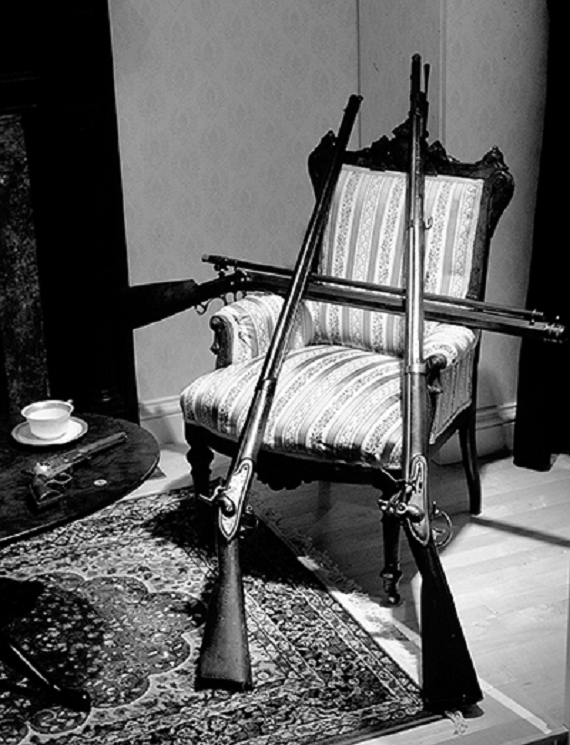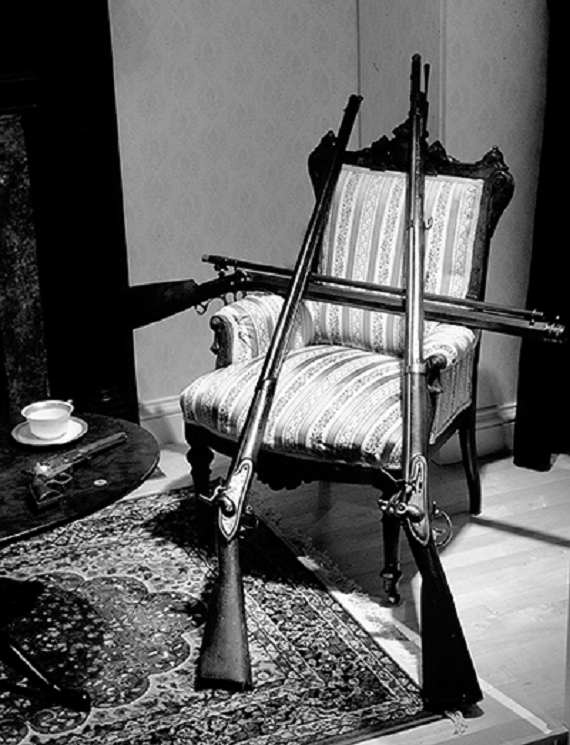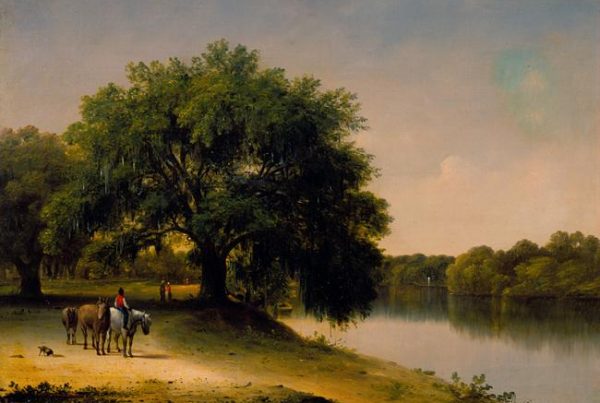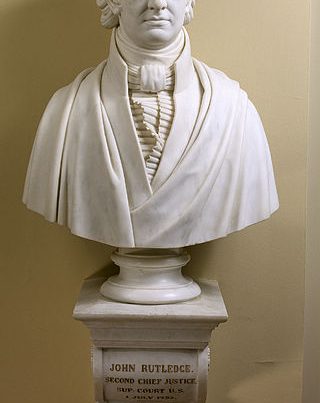
Literature, be it works of fact or fiction, might well be described as a window through which the reader is invited to view the world as the author chooses to see it. Between fact and fiction though there is a third world in which the writer is granted literary license to transform the two other worlds into the fantastic realm of alternate history . . . the land of what might have been.
The route to an alternate history was first taken by the Roman historian Titus Livius over two thousand years ago when he imagined that Alexander the Great had survived his Asian adventures and returned to Europe to fight a losing war against the Roman Empire. This genre did not, however, become truly popular until the early years of the Nineteenth Century when a French author, Louis Geoffroy, envisioned Napoleon defeating Russia, invading England and ultimately ruling the world. While both the First and Second World Wars brought forth many examples of alternate history, the War Between the States has perhaps accounted for the greatest number, with over fifty authors producing such works. The two earliest examples of this were novels in which the Confederacy became a nation without war . . . the first being Frank Williams’ fanciful 1900 tale “Hallie Marshall” in which an abolitionist Yankee wakes from a Rip van Winkle-like sleep and finds himself at a plantation in the independent Confederate States of America. Three years later, Ernest Crosby wrote “If the South Had Been Allowed to Go,” a polemic in which the author described the War Between the States as one of Northern corruption and America’s first imperialist war. Crosby then offered an alternative world in which the South was allowed to go in peace and slavery had finally been ended by the slaves themselves all fleeing north from the Confederacy.
Most later works, however, deal with altering the course of history by the South winning its independence on the field of battle, with the earliest being a piece by Winston Churchill in the 1931 anthology by British historian Sir John Squire, “If It Had Happened Otherwise.” Churchill’s essay had Lee winning a decisive victory at Gettysburg and the South then going on to gain its nationhood. Two decades later, American author Ward Moore traced the same path in his 1952 classic “Bring the Jubilee.” This novel, however, injected the element of science-fiction, with its protagonist traveling back to Gettysburg in a time machine and accidentally resetting history on its actual course. In Harry Turtledove’s 1992 novel, “Guns of the South,” the Confederacy also gained its independence in battle, and once again a time machine was employed. This time though, the time travelers were apartheid supporters from South Africa who came to supply the South with modern AK-47 assault rifles in an effort to insure the future of slavery via a Confederate victory.
While alternative history is fiction, certain concepts, such as the added firepower in “Guns of the South,” could well have become a reality if actually put into practice. When Georgia seceded from the Union in 1861, Senator Howell Cobb said before he left Congress that “we can beat you Yankees, even if we are armed with cornstalks.” Brave talk indeed, but events soon proved that far more than cornstalks would be needed if the South was to gain its independence. Even with the capture of a number of Federal arsenals there were only about a hundred and fifty thousand military small arms of all types available in the Southern States at the start of the War. As to the means of producing additional arms, there were some fifty, mostly small, facilities capable of producing weapons, representing merely three per cent of America’s total arms production. The North also had a population advantage of twenty-two million to the South’s nine million, with more than half of the latter being slaves. Moreover, the North far surpassed the South in almost every other vital category, with ninety per cent of the nation’s total manufacturing capacity and over seventy per cent of its railroads. At any point in the War, the North always had at least a two-to-one superiority in military manpower, and a far greater ability to replace losses. In the latter part of the War, the Union forces gained even more superiority and killing power with the introduction of the seven-shot Henry and and sixteen-shot Spencer repeating rifles, as well as the world’s first practical machine gun, the Gatling, which saw limited service at Petersburg during the closing weeks of the War.
The key to overcoming these great odds would have been for the South to gain a degree of greater firepower on the field of battle early in the War. Throughout the War the problem was not that the Confederacy lacked sufficient arms, but that its firepower was basically the same at that of its foe, namely that the vast majority of the weapons on both sides were muzzle-loading rifles and carbines that were capable of firing only three shots a minute. To illustrate this, during the War the South produced about sixty-five thousand small arms of all types, with all but five thousand of those being muzzle-loading weapons. The South also produced well over a thousand pieces of artillery, most of which were muzzle-loading cannons of various types from the Tredegar Iron Works in Richmond. There were another half-dozen smaller heavy arms facilities, such as the Selma Naval Foundry in Alabama that manufactured about seventy of the superior muzzle-loading rifled cannons developed by Commander John M. Brooke, the head of the Confederate Naval Bureau of Ordinance and founder of the Confederate Naval Academy. Only one highly mobile breech-loading arm, the Hughes light field piece, was manufactured by Street and Hungerford in Tennessee. This unique gun could fire up to eight rounds a minute and no more than fifty were produced during the War. There is no indication, however, that any effort was ever made to expand the production of this far more efficient weapon
Those mainly responsible for keeping the Southern forces well armed were two Northerners, the first being Brigadier General Josiah Gorgas, a native of Pennsylvania who served as the Confederacy’s chief of ordinance and is credited with creating a viable arms industry in the South. However, a much greater supply of additional arms and ammunition was needed and procuring these items from Europe fell to another from the North, Major Caleb Huse of Massachusetts. In 1860, Huse, who had graduated from the U. S. Military Academy at West Point in 1851 and had been an instructor there for several years, took a position with the University of Alabama to establish a course in military training. In April of the following year, Huse was invited to Montgomery to meet with Confederate Secretary of War Walker, after which he accepted a commission as a major in the Confederate Army and was sent to Europe to purchase war supplies. Huse’s efforts there brought well over a quarter of million small arms to the South, many of them two of Europe’s finest military rifles and carbines, the muzzle-loading British Enfield and Austrian Lorenz. In addition, Europe also supplied the Confederacy with six million cartridges, thirteen million percussion caps, two hundred and fifty tons of gunpowder and a thousand tons of lead, the latter representing forty per cent of the South’s total wartime needs. Huse also obtained over a hundred and forty pieces of artillery from Great Britain and Austria that included a number of the far more efficient English Whitworth and Armstrong breech-loading cannons.
What the out-numbered South desperately required initially, however, was far greater firepower. Parity in muzzle-loading arms was not enough to gain victory. What was needed were many more breech-loading small arms and cannons that could be fired at a rate three times faster than muzzle-loading weapons, thus leveling the playing field by more rapidly eliminating much larger numbers of the enemy. While such arms were not yet widely available in Europe, some had already been made in the South, such as those by S. G. Robinson in Virginia who ultimately produced three-thousand Sharps-type breech-loading carbines during the War and George W. Morse in South Carolina who supplied over a thousand of his breech-loading weapons to the Confederate forces. Two smaller makers in North Carolina, H. C. Lamb and Garrett Tarpley, each turned out several hundred such weapons. While all of these arms were serviceable, perhaps the types which showed the most potential as the primary weapons for the Confederate forces were the Morse rifles and carbines.
George Washington Morse, the nephew of telegraph developer and inventor of the Morse code, Samuel Morse, was a native of South Carolina. In October of 1856, he had been granted a United States patent for a new type of breech-loading .58 caliber rifle which he initially produced in Baton Rouge, Louisiana, and was later adopted by the U. S. Army. The Army had started using a type of breech-loading weapon, the Hall rifle, as early as 1819 and produced almost forty thousand of Hall’s rifles and carbines up until 1842. The Hall weapons, however, had a major design flaw, namely a gas leak that made the muzzle velocity much less than that of the standard muzzle-loading Springfield rifle that continued to be issued to the Union troops throughout the War. The Army later sought a method of converting the existing Springfields into breech-loading rifles and just before the War they adopted Morse’s design. Machinery for the conversions was moved from Louisiana to the Federal armory at Harper’s Ferry in July of 1860 where it was taken over by the Virginia Militia less than a year later. Rather than using the equipment at Harper’s Ferry, Morse asked that it be shipped to the Nashville Arsenal where he was then producing arms. After that city fell to the Union forces a year later, the machinery was first sent to Atlanta and finally ended up in Greenville, South Carolina.
In all this, the Confederacy lost a major opportunity, for had the Morse equipment involving both the production of new breechloading small arms and the conversion of existing muzzle-loading weapons been standardized and expanded in the early days of the War, the South could immediately have had a supply of domestic arms that would have provided much of the added firepower it so badly needed. Beyond that, if the Morse design for conversion could also have been exported to Europe at an early stage, a large number of the tens of thousands of muzzle-loading arms that were imported could have been transformed into far more rapid-firing weapons. Needless to say, along with such increased firepower, a change in basic tactics would also have had to been adopted to make such firepower even more effective. As the Union should have learned at Fredericksburg and the Confederates later at Gettysburg, the frontal assault tactics of Napoleon that were taught at West Point were sheer folly when facing a well entrenched enemy, even one armed with muzzle-loading rifled arms. Against troops armed mainly with the far more rapid-firing breech-loading weapons, such tactics would have been positively suicidal.
Furthermore, at the start of the War, the interior lines of the South also gave the Confederacy a defensive advantage and when combined with greater firepower, the South would have had the opportunity to initially destroy larger numbers of the attacking enemy. Perhaps the staggering Northern casualty lists that would be produced might have forced not only the Northern public but even Lincoln to realize that their War of aggression against those who were fighting to defend their newly created homeland was really not worth the awful price that must ultimately be paid. One might say, of course, that all of this is nothing more than a journey into the fanciful realm of what might have been . . . merely just another example of purely alternate history . . . but there is little doubt in this writer’s mind that such events could certainly have become the reality of actual history. Unfortunately, as poet John Greenleaf Whittier so aptly wrote . . . “for all sad words of tongue or pen, the saddest are these, it might have been.”






